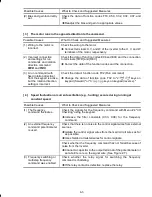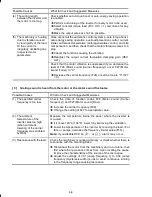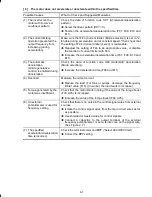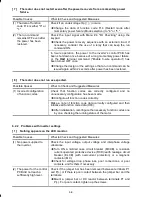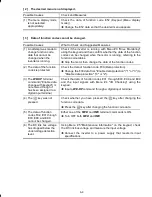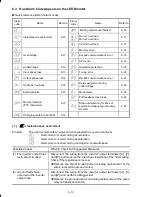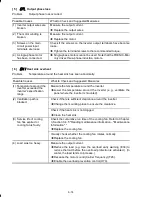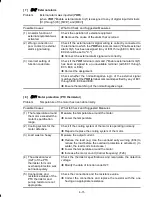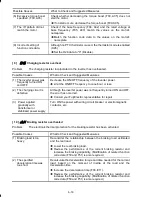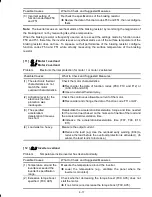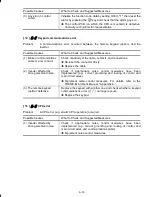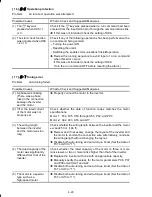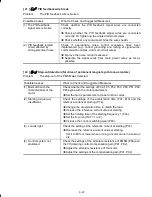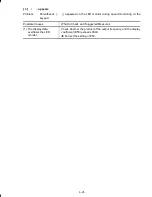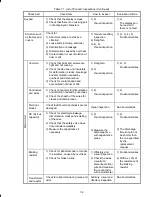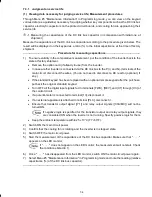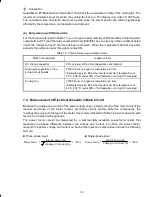
6-17
Possible Causes
What to Check and Suggested Measures
(3) Incorrect setting of
function code data F50
and F51.
Recheck the specifications of the braking resistor.
Review the data of function codes F50 and F51, then reconfigure
them.
Note:
The inverter issues an overheat alarm of the braking resistor by monitoring the magnitude of
the braking load, not by measuring its surface temperature.
When the braking resistor is frequently used so as to exceed the settings made by function codes
F50 and F51, therefore, the inverter issues an overheat alarm even if the surface temperature of the
braking resistor does not rise. To squeeze out full performance of the braking resistor, configure
function codes F50 and F51 while actually measuring the surface temperature of the braking
resistor.
[ 11 ]
0l1
Motor 1 overload
0l2
Motor 2 overload
Problem
Electronic thermal protection for motor 1 or motor 2 activated.
Possible Causes
What to Check and Suggested Measures
(1) The electronic thermal
characteristics do not
match the motor
overload characteristics.
Check the motor characteristics.
Reconsider the data of function codes (P99, F10 and F12) or
(A39, A06 and A08).
Use an external thermal relay.
(2) Activation level for the
electronic thermal
protection was
inadequate.
Check the continuous allowable current of the motor.
Reconsider and change the data of function code F11 or A07.
(3) The specified
acceleration/
deceleration time was
too short.
Recalculate the acceleration/deceleration torque and time needed
for the current load, based on the moment of inertia of the load and
the acceleration/deceleration time.
Increase the acceleration/deceleration time (F07, F08, E10,
E11).
(4) Load was too heavy.
Measure the output current.
Reduce the load (e.g. Use the overload early warning (E34) to
reduce the load before the overload protection is activated.). (In
winter, the load tends to increase.)
[ 12 ]
0lu
Inverter overload
Problem
Temperature inside inverter has risen abnormally.
Possible Causes
What to Check and Suggested Measures
(1) Temperature around the
inverter exceeded the
inverter's specification
range.
Measure the temperature around the inverter.
Lower the temperature (e.g., ventilate the panel where the
inverter is mounted).
(2) Excessive torque boost
specified. (F09, A05)
Check whether decreasing the torque boost (F09, A05) does not
stall the motor.
If no stall occurs, decrease the torque boost (F09, A05).



